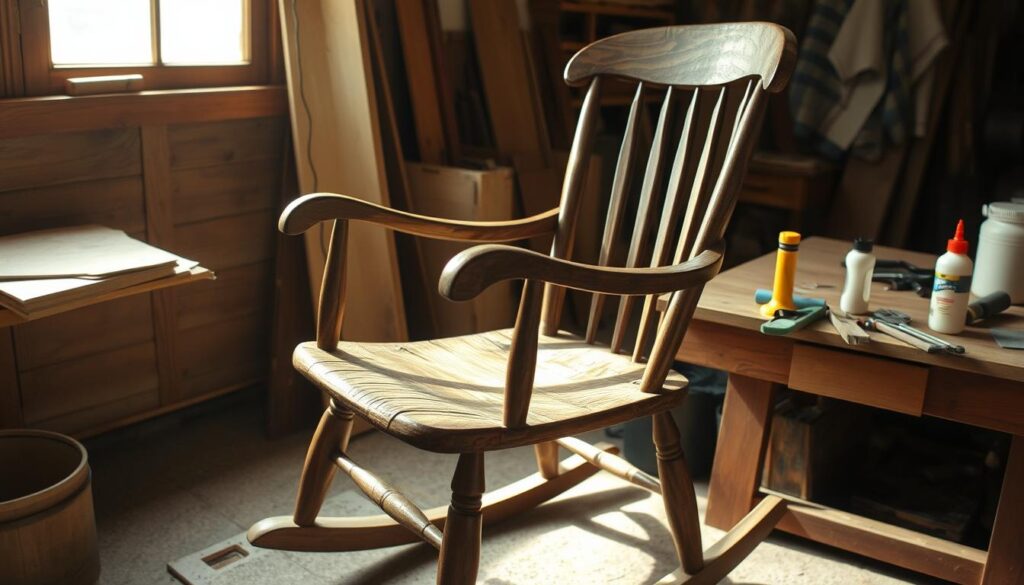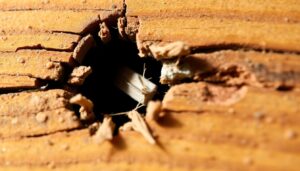Are you tired of your favourite rocking chair creaking and swaying unevenly? Loose runners can be a real nuisance, but fortunately, reglueing them is a relatively straightforward process.
Reglueing your rocking chair runners can restore your beloved piece of furniture to its former glory. Properly securing the runners is crucial for safety, stability, and longevity.
Key Takeaways
- Discover how to effectively reglue rocking-chair runners for improved stability.
- Learn the importance of grain direction in wood for durable repairs.
- Understand professional techniques for securing runners to save time and money.
- Explore traditional and modern methods for repair to suit your chair’s needs.
- Gain insights into restoring your rocking chair to its original condition.
Why Rocking-Chair Runners Fail
Understanding why rocking-chair runners fail is crucial for maintaining the longevity of your chair. The failure of these critical components can lead to a potentially hazardous situation, making it essential to identify the causes and address them promptly.
Common Causes of Runner Damage
Several factors contribute to the deterioration of rocking-chair runners. Improper weight distribution, manufacturing defects, and environmental factors like humidity changes are among the most common causes. Repeated stress on specific points of the runners can lead to gradual weakening and eventual breakage over the years. It’s essential to be aware of these potential issues to take preventive measures.
| Cause of Damage | Description | Prevention |
|---|---|---|
| Improper Weight Distribution | Uneven weight on the runners | Regularly check and adjust the chair’s balance |
| Manufacturing Defects | Defects in the runner construction | Inspect the runners for any defects before use |
| Environmental Factors | Changes in humidity affecting the wood | Maintain a stable environment for the chair |
The Importance of Grain Direction in Wooden Runners
The grain direction in wooden runners plays a significant role in their durability. Sawn runners are more susceptible to splitting along the grain, whereas bent runners with continuous grain are less likely to fail in this manner. A closer look at antique chairs reveals that even sawn runners can last for nearly a century if properly constructed. The choice between sawn and bent runners significantly affects the chair’s longevity.
Essential Tools and Materials to Reglue Rocking-Chair Runners
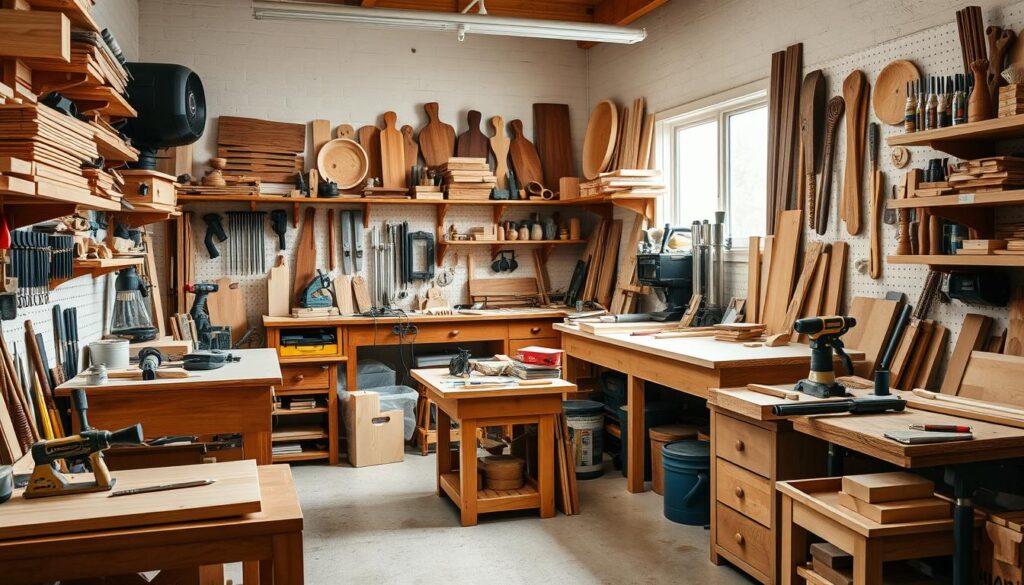
Regluing rocking-chair runners requires a specific set of tools and materials to achieve a professional-quality repair. To start, you’ll need to assemble the essential tools needed for a successful repair.
Required Tools for a Professional Repair
For a professional-quality repair, you’ll need clamps of various sizes, a drill with appropriate bits, and fine-grit sandpaper for surface preparation. Specialised tools like a bench drill press for precise pilot holes or a band saw for creating replacement parts can be helpful but are not always necessary. If you have access to a small shop with machines like a router and table, 14″ band saw, 12″ planer, or a 10″ hybrid table saw, these can significantly aid in the repair process.
Choosing the Right Adhesives and Supplementary Materials
Selecting the right adhesive is crucial, and there are different types of wood glue available. The choice of glue depends on your specific chair construction and environmental conditions. In addition to glue, supplementary materials such as screws, dowels, and reinforcement brackets can enhance the durability of the repair, especially for severely damaged runners. It’s also important to consider safety equipment, including eye protection, gloves, and proper ventilation when working with adhesives and wood dust.
Preparing Your Rocking Chair for the Repair Process
The key to a successful reglue job lies in properly preparing your rocking chair for the repair process. This involves a thorough assessment of the damage and, if necessary, partial disassembly to access the areas that need repair.
Thoroughly Assessing the Damage
To start, you need to conduct a thorough assessment of your chair’s condition. This means not just identifying the obvious breaks but also looking for potential weak points that could fail in the future. Examine the rocker and runners closely for any signs of damage or wear. It’s also crucial to check if the damage extends beyond the runners to other parts of the chair.
As one user noted, “I didn’t need to disassemble the chair; it was easy enough to loosen the screws and rotate the broken parts to get at the surfaces needing glue.” This approach can be effective, but it requires careful consideration of the chair’s structure and the extent of the damage.
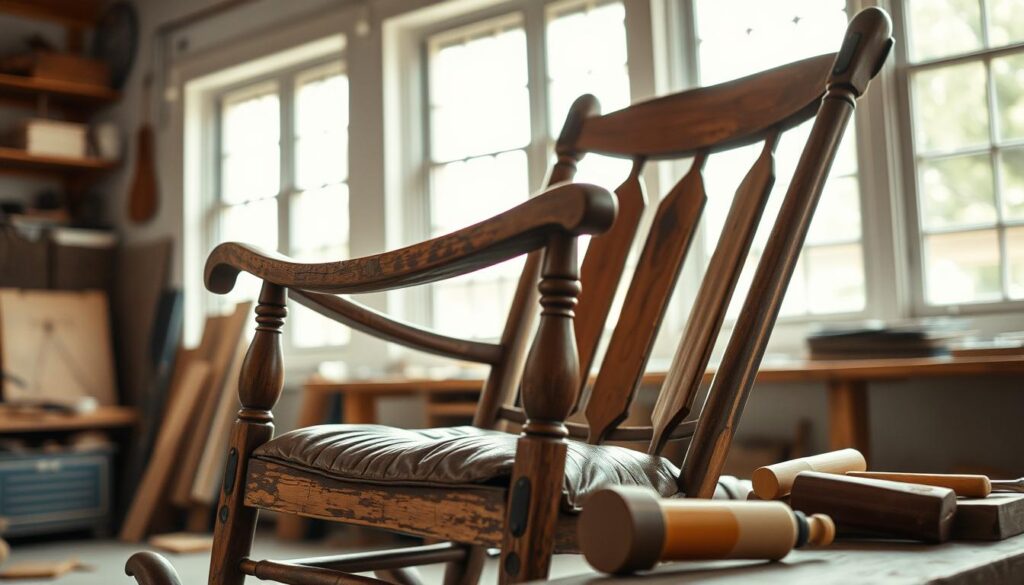
Partial Disassembly Techniques (When Necessary)
In some cases, complete disassembly of the rocking chair may not be necessary. Instead, you can use partial disassembly techniques to access the damaged areas. This involves loosening the relevant screws or fasteners and gently rotating the broken parts to expose the surfaces that need to be reglued.
It’s essential to document the original assembly with photographs or sketches before taking anything apart. This will ensure that you can restore the chair to its proper configuration. Additionally, you should take care to support and stabilise the rocking chair during the preparation phase to prevent further damage or personal injury.
By taking the time to properly prepare your rocking chair for repair, you can ensure a successful reglue job that will extend the life of your chair. As the saying goes, “A stitch in time saves nine,” and in this case, a thorough preparation can save you from more extensive repairs down the line.
Step-by-Step Process to Reglue Rocking-Chair Runners
The process of regluing rocking-chair runners involves several key steps that ensure a strong and lasting bond. You will need to clean the joint surfaces thoroughly, apply adhesive correctly, clamp the parts securely, and reinforce the joint with screws if necessary.
Properly Cleaning the Joint Surfaces
Before applying any adhesive, it’s crucial to clean the joint surfaces to remove dirt, oils, and old adhesive that may interfere with the new bond. Use a gentle scrubber or sandpaper to roughen the surfaces slightly, ensuring a better grip for the glue. This step is essential for a successful repair.
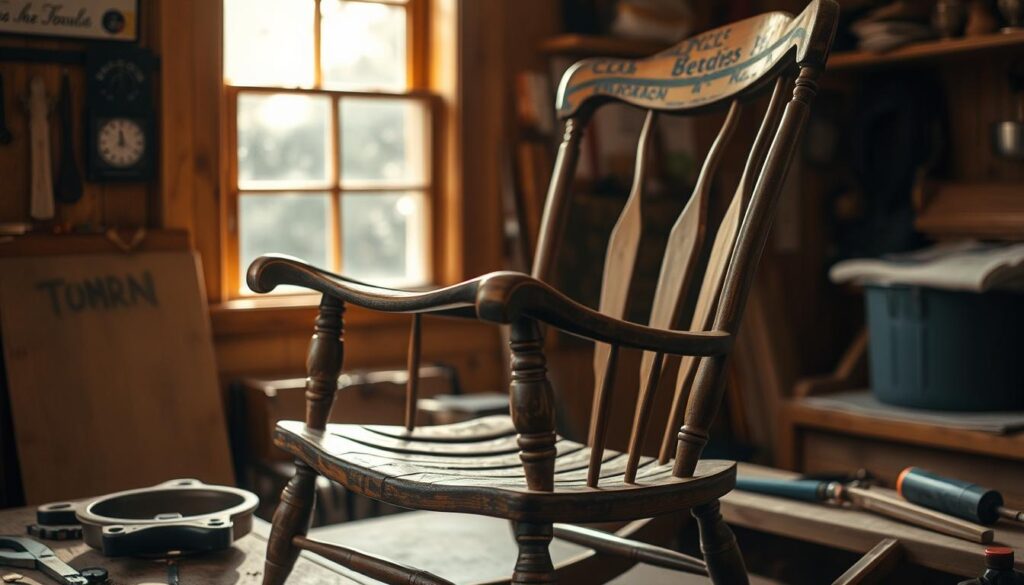
Applying Adhesive for Maximum Strength
To maximise the strength of the bond, apply a thin, even layer of wood glue to both surfaces. Be cautious not to overapply, as excess glue can squeeze out and weaken the joint. Use a clamp to hold the parts together while the glue dries.
Effective Clamping Techniques for Secure Bonds
Clamping is a critical step in the regluing process. Use multiple clamps to apply even pressure across the repair area, preventing misalignment during the drying process. Protect the wood surfaces from clamp damage by using scrap wood or specialised clamping pads.
| Clamping Technique | Description | Benefits |
|---|---|---|
| Multiple Clamps | Apply even pressure across the repair area | Prevents misalignment, ensures secure bond |
| Scrap Wood or Clamping Pads | Protects wood surfaces from clamp damage | Prevents scratching or denting |
Reinforcement Methods Using Screws and Pilot Holes
For added security, consider reinforcing the joint with screws. Drill pilot holes of different sizes to avoid splitting the wood: a smaller hole for the screw shank and a larger hole for the threads. This technique creates a mechanical clamping effect, ensuring a strong and durable bond.
By following these steps and using the right techniques, you can successfully reglue your rocking-chair runners and enjoy a stable, comfortable chair once again.
Finishing Touches and Ensuring Longevity
Now that you’ve successfully reglueed your rocking-chair runners, it’s time to consider the final steps for a long-lasting finish. The finishing touches are crucial in ensuring that your repair work withstands the test of time and continues to provide you with comfortable, smooth rocking motion.
Replacing Protective Elements
One of the key aspects of finishing your repair is replacing protective elements such as felt strips or floor protectors. These elements not only protect your floors from damage but also contribute to the smooth operation of your rocking chair. When replacing felt, it’s essential to match the thickness of the original material to maintain even pressure distribution. As you’ve noted, “Although I am confident this repair will hold, I didn’t want to tempt fate by putting a lump right under it.” This cautious approach highlights the importance of attention to detail in the finishing stages.
To achieve this, you can use clamps to compress the new felt until it matches the thickness of the older felt. This technique ensures a smooth transition between the old and new materials, preventing any uneven pressure points that could compromise your repair.
Testing the Repair for Safety and Functionality
Before returning your rocking chair to regular use, it’s vital to test the repair for both safety and functionality. This involves conducting weight-bearing tests and assessing the chair’s motion to ensure that it rocks smoothly and evenly. You should also inspect the repair for any potential weak points that may require additional attention. By doing so, you’ll be able to identify any issues before they become major problems, ensuring the longevity of your repair work.
As you test your repaired rocking chair, remember that “confident is confident, but safer is better.” This mindset will help you to be thorough in your assessment and make any necessary adjustments to guarantee a safe and functional rocking chair.
Conclusion
Regluing your rocking-chair runners is a simple yet effective way to preserve the integrity and functionality of your beloved rocking chair. By doing so, you’re not only extending its lifespan but also contributing to a more sustainable approach to furniture maintenance.
Completing this repair work yourself can be cost-effective and rewarding, allowing you to develop a deeper connection with your furniture’s craftsmanship. While professional chair repair services are available, taking on this task personally can be a fulfilling experience.
With proper repair and maintenance, your rocking chair can remain a cherished piece of furniture for years to come. The skills you’ve learned from this process can also be applied to other wooden furniture restoration projects, making it a valuable investment of your time.
By maintaining and repairing your furniture, you’re participating in a tradition of craftsmanship that values quality and sustainability. With patience and attention to detail, you can achieve professional-like results using basic household tools, making the repair of your rocking chair runners a worthwhile endeavour.
